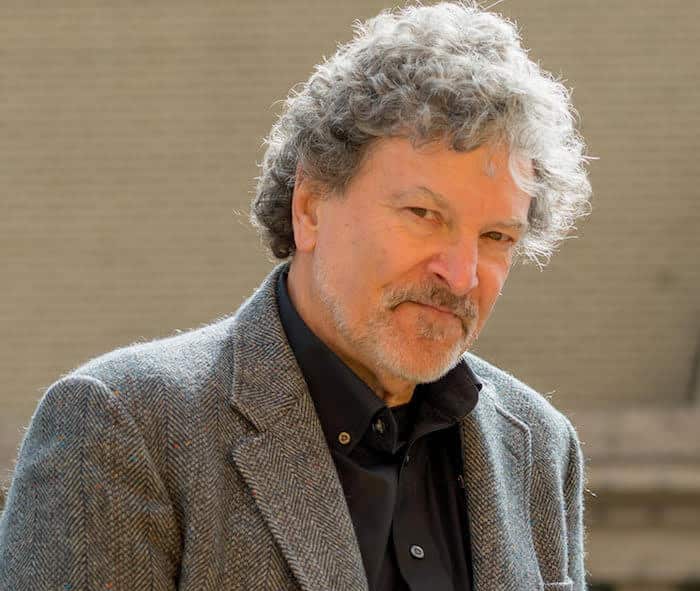The Purposeful Culture Group Founder and CEO S. Chris Edmonds describes how intentional leadership and culture management are driving the success of modern organizations. Everyone has experienced a challenging boss at some point in their working life. Where no matter how hard you work or how many hours you put in, they’re not satisfied with your performance. Only interested in your daily deliverables and how they’re going to get the organization to make more money.
That old-fashioned management mentality is waning in today’s workplace. The newer generations of workers aren’t sticking around at jobs where they’re not supported — they’re seeking meaningful workplace cultures they can grow with.
S. Chris Edmonds, Founder, and CEO of the Purposeful Culture Group, is helping managers become leaders for today’s workforce. He helps them understand the importance of their workplace culture and how it can help them have more success overall as an organization and retain better long-term talent.
Before we get into the specifics of how to improve it, how do you define “workplace culture?” What are some of the essential elements that make up this term in your eyes?
Edmonds: Culture is widely misunderstood. When I began digging into it about 28 years ago, what I realized was that most senior leaders don’t have a comfort with either evaluating or changing culture. Very few have ever done or seen an effective culture change take place. Because of this, it’s an unfair expectation to tell leaders “fix your culture because it’s broken or bent.”
The way I define culture is how people treat each other day-to-day at work. We can look at what I call “artifacts.” Back in the ‘50s, it was men in blue suits with white shirts and red ties that were in senior leadership positions. You can look at artifacts like where people go to work, how they dress when they get to work, and how they interact with customers at work. There’s obviously a huge range of differences in how workplaces operate.
The underlying idea that I’ve been pushing is: you may not have an intentional culture, but you have a culture and the foundation of it is how people treat each other at work.

Outside of simply being a member of the C-Suite, what do you think makes a great leader? Can someone who is not a C-Suite member become a leader in the workplace and have real influence?
Edmonds: If you think about senior leaders, they have the responsibility to change policy and pay people. There are incentives and rewards that happen there. The idea of senior leaders not being comfortable with culture, not knowing exactly how to manage it, and so on is very common.
For a person who is not a formal leader — they often delegate. It’s not their gig, they see something is wrong, they see the anger with organizational values, but they believe it’s not their role to fix it. If someone has that formal responsibility for a team, they can modify the day-to-day interactions and culture of that team.
Could a person with no leadership responsibility have a positive impact? Absolutely. Can they change a team’s culture? It would be pretty difficult. It literally requires someone who can change incentives, rewards, and messaging. It takes someone with leadership responsibility to get that traction going.

Have you seen this work against corporate culture? For example, if someone is leading an organization in a negative way?
Edmonds: If leaders are getting things done and, this is going to sound a little weird, the only thing they’re asked to do is manage results — then we shouldn’t be surprised if they’re being mean, nasty, and ugly. Not surprisingly, leaders begin to behave based upon what gets incentivized and rewarded, which is then repeated.
My language has really evolved because I say “you have a culture, but let’s talk about whether it’s a purposeful, positive, productive culture.” Some organizations say they’re purposeful because everyone is trying to beat each other with the most sales. It’s a very Western mindset to beat out our competitors. If you’re forcing people to be dishonest and lie, cheat, steal in whatever fashion then you’ve got a culture that is badly broken. If leaders are behaving in ways that demean, dismiss, and discount people in order to get results done — that’s a huge red flag.
And yet, we have leaders that treat each other badly, they treat their customers badly, they treat their employees badly, and somehow they continue having jobs. The reality is that the organization might still make money. However, an interesting thing that’s been happening since the global recession is that employees aren’t staying in places where bosses are mean and demeaning.
I watch the Department of Labor survey every month. In the U.S., a September 2018 survey showed there have been 3.6 million workers who have voluntarily left their jobs. That’s a lot of people choosing to quit. The first time they hit that number was in April 2018. People aren’t staying in jobs that aren’t civil or respectful. Could that start to lead leaders to think “if I’m mean, nasty, and ugly, am I going to lose talented people?” A lot of leaders don’t even pay attention to that.
It really is incumbent upon the senior leadership team to look around and say “are we treating people civilly?” The answer may be no. “Are we retaining talented people?” The answer also may be no. That said, I think leaders are doing the best they can and literally doing what they’ve been asked to do. If they weren’t asked to create a civil culture, they don’t know what to do with one. They continue reinforcing results and don’t even pay attention to whether people are happy, validated, or respected.
I just had a wonderful scenario about three months ago with one of my current clients doing a leadership impact survey. These six executives got feedback from their peers about their day-to-day influencing and impact. Were they actually building positive impact or defensive impact, and what kind of impact do they want to have. That’s an instrument that I use with clients all the time to let leaders understand their perception of others.

What is an “Organizational Constitution?” Could you take me through how your three-step process (Define, Align, Refine) helps bring that to life?
Edmonds: If there’s anything I’ve realized it’s that I’ve really had one idea and the Organizational Constitution is it. It’s about taking advantage of senior leaders comfort with managing results. This is a skill that’s been reinforced for ages, so how do we shift that? How do we allow that skill-set to be used in a way that actually benefits the culture and the relationship people have in an organization?
It’s a formal statement that says this is what we want to be, what we want to stand for, how we want to treat others. It’s that formality of saying here’s our organizational purpose and here’s how we want to make money.
The results side of an Organizational Constitution is what are your strategies and goals? What are the results you need to have so you can sustain the business and continue to improve people’s quality of life? You keep hooking it back to making a positive, significant difference in your communities, not just money.
The biggest piece most organizations need help with is what their values are and what measurable behaviors do they want people to hold themselves accountable for. The Define stage of this three-step process is literally pulling executives out of their day-to-day environments for a couple of days and asking about the purpose and value that drives them.
Some organizations have values, very rarely have they defined them in observable and tangible terms. I help them get from these lofty ideas like integrity, safety, or excellence into tactical terms. A tactical statement might be “I say what I’m going to do,” that’s an observable and tangible term people can be measured on. The Define stage helps their Organizational Constitution get to the degree of “what do you actually mean by integrity?” Just as people are measured on performance metrics, let’s make the values expectations measurable too.
The Align phase is much longer. Typically with organizations that don’t have values in place, the define phase is probably a 4-5 month process of defining the Organizational Constitution elements and letting employees react to it. The Align phase is about 18 months in length and is the hardest because it requires ensuring everyone in the organization now lives these behaviors. Of course, the leaders have to act on this first and not just announce them to everybody else.
The Align phase is where accountability comes into play. Part of it is not tolerating bad behavior anymore. If you’re going to set these rules and measurable behaviors, you can’t let someone yell, scream, and throw ladders. There’s a skill-set leaders need to develop where, for example, they say “Chris, we don’t do that anymore” and if they’re still doing it five times a week, the conversation needs to shift to “Chris, you cannot work here anymore because these values and behaviors are that important.” You can tell this phase has really begun when people choose to align or leave.
The last piece of this, the Refine stage, happens when you find every couple of years you need to tweak performance strategies and results targets. It’s really about tweaking behaviors. That’s how the Define, Align, Refine process works.

Could you give us an example of a highly successful workplace culture in practice? What makes this particular organization stand out for you?
Edmonds: One of the companies that I’ve studied intently is the WD-40 Company. They’re a global company that’s immensely successful. They talk about the values-based tribe they’ve built. I was a business school professor for a while and Garry Ridge, their president and CEO, came through for his second Master’s degree because he thought learning was that important.
I met Garry back in 2000 and learned a great deal about how his company has evolved. They have 93% engagement across their global workforce. They have a 98% response rate on their annual survey. They’re doing a lot of things right.
Garry’s philosophy is really to help people succeed and operate from their passions. One of his key ideas as CEO was “we don’t make mistakes here, we have learning moments.” Everyone is going to make mistakes, but if we share our mistakes then others learn from it and make different ones. It’s a very unique culture that is working really well.
Find out more about how the Purposeful Culture Group can help your organization build a successful workplace culture at their website.
What is your definition of a strong workplace leader? Join the conversation and leave us a comment below.
Photos: Max Bender, rawpixel, Shutterstock, Stocksnap





